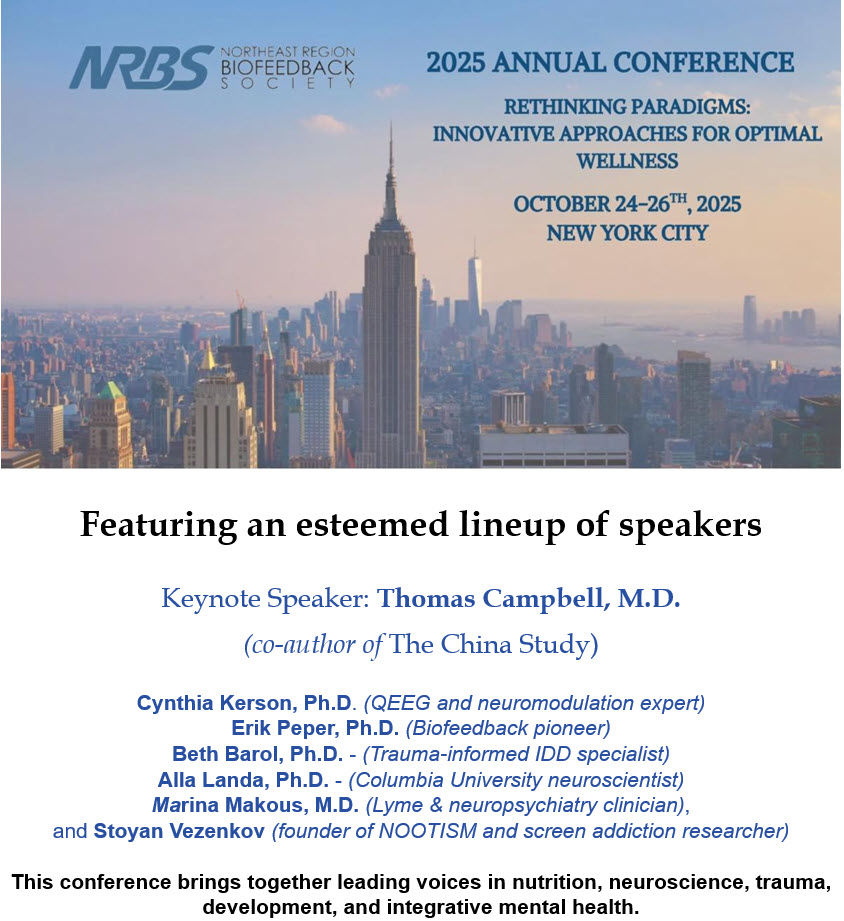5-Min Science: Nasal Respiratory Fingerprints
- Fred Shaffer
- Sep 1
- 8 min read
Updated: Sep 9

What is the Science?
The groundbreaking study by Soroka and colleagues (2025) represents a paradigm shift in our understanding of human breathing. Rather than viewing respiration as a simple, automatic function, the researchers demonstrated that each person possesses a unique and stable "nasal respiratory fingerprint"—a distinctive pattern of breathing that can identify individuals with the same precision as traditional biometric markers, such as fingerprints or voice recognition.
The science behind this discovery lies in the sophisticated neural networks that control breathing. The pre-Bötzinger complex in the brainstem serves as the primary pacemaker, generating rhythmic signals that drive respiration. However, this basic rhythm is constantly modulated by cortical and subcortical regions that adjust breathing in response to emotions, cognitive demands, and environmental changes. Respiratory center graphic adapted by minaanandag on fiverr.com.

What makes this particularly fascinating is that every human brain is structurally and functionally unique. These individual differences inevitably influence how the respiratory control system operates.
The researchers hypothesized that these brain-based differences would manifest as measurable, person-specific variations in breathing patterns that persist over time. By reframing respiration as a continuous time series rather than isolated breath-by-breath events, they could analyze the temporal dynamics and subtle rhythmic variations that emerge from each person's unique neural respiratory control system.
This approach revealed that nasal breathing patterns reflect the coordinated activity of multiple brain regions across extended periods, creating a biometric signature that encodes information about both the individual's identity and their physiological and psychological state.
.
What did they study?
The research team undertook an investigation aimed at addressing several interconnected questions. Their primary objective was to determine whether individuals could be reliably identified based solely on their nasal breathing patterns, and whether these patterns remained stable across extended periods, potentially spanning months or years.
Beyond identification, the researchers aimed to determine whether respiratory fingerprints could provide meaningful insights into a person's physiological and psychological state. They hypothesized that breathing patterns might reflect transient conditions like sleep versus wakefulness, as well as stable individual characteristics such as body mass index and predispositions to anxiety or depression.
To address these questions, the team recruited 100 healthy participants aged 18 to 35. Each participant underwent continuous nasal airflow monitoring for a full 24-hour period using a specially designed wearable device. This extended recording window was crucial because it captured breathing patterns across all daily activities and sleep cycles.
The psychological assessment component involved three validated questionnaires. The Beck Depression Inventory assesses depressive symptoms, while the Trait Anxiety Questionnaire evaluates each person's general tendency toward anxiety. The Autism Spectrum Quotient captures traits associated with autism spectrum conditions in the general population.
This multidimensional approach allowed the researchers to examine correlations between specific breathing characteristics and psychological traits, testing whether the neural processes underlying respiratory control might also influence mental health and cognitive function.
How did they do it?
The technical innovation at the heart of this study was the development of the Nasal Holter, a custom-built wearable device that revolutionized respiratory monitoring. Named after the Holter monitor used in cardiology, this device represents a significant advance over traditional spirometry methods, which capture only brief snapshots of breathing function. Graphic courtesy of Soroka and colleagues (2025).

The Nasal Holter was engineered as a lightweight device worn on the back of the neck and connected to the nostrils via a specialized nasal cannula. The system featured separate thin plastic tubes for each nostril, enabling independent monitoring of left and right nasal airflow. The device incorporated highly sensitive pressure sensors capable of detecting minute changes in airflow, sampling at 6 Hz to provide fine-grained temporal resolution.
This high-frequency sampling was essential for capturing the subtle variations and rhythmic patterns that distinguish individual breathing signatures. The sensors produced detailed traces that revealed not only basic respiratory parameters like breathing rate and volume, but also complex temporal features such as the precise timing of inspiratory and expiratory phases and asymmetries between nostrils.
The analytical framework employed two sophisticated computational approaches. First, the researchers utilized BreathMetrics, a specialized toolbox that calculated 24 standard respiratory parameters including tidal volume, duty cycle, and inspiratory and expiratory flow rates. Second, they applied the Highly Comparative Time Series Analysis (HCTSA) toolbox, which computed thousands of general-purpose features from the continuous airflow data.
Machine learning classification employed neural networks with 300 hidden units, trained using a "winner takes all" approach to match breathing segments with the correct participant. The stability analysis involved bringing 42 participants back for second sessions up to 23 months later, testing whether their respiratory fingerprints remained recognizable over extended periods.
.
What did they find about nasal respiratory fingerprints?
The results exceeded expectations, revealing that nasal breathing patterns are highly individual-specific and remarkably stable over time.
The machine learning classifier achieved an impressive 96.8% accuracy in identifying individuals based on their 24-hour breathing data. This performance level rivals established biometric identification systems, demonstrating that breathing patterns are as distinctive as fingerprints or voice characteristics.
Even more impressive was the system's performance with limited data. When tested with just one hour of breathing recordings, identification accuracy remained substantially above chance levels, suggesting that individual respiratory signatures are robust and detectable even in brief samples.
The temporal stability results were equally striking. In the follow-up study involving 42 participants who returned up to 23 months later, identification accuracy remained at 95%. This demonstrates that respiratory fingerprints represent fundamental, intrinsic characteristics rather than temporary features influenced by mood or environmental factors.
Beyond identification, the respiratory data provided remarkable insights into physiological states.
Sleep-wake classification achieved over 94% accuracy using just five key features from 5-minute data segments.
During sleep, participants showed predictable changes, including decreased tidal volume and minute ventilation, along with increased asymmetry between nostrils consistent with the natural nasal cycle.
The psychological correlations revealed fascinating connections between breathing patterns and mental health traits. Individuals with higher Beck Depression Inventory scores exhibited distinctive patterns in peak inspiratory flow, while anxiety levels correlated with specific alterations in inhale-exhale dynamics during sleep. Body mass index (BMI) showed strong associations with breathing parameters, particularly greater tidal volume during sleep in individuals with higher BMI.
Most remarkably, canonical correlation analysis revealed a robust multivariate relationship (r = 0.87) between respiratory features and the combined psychological measures.
This strong correlation suggests that breathing patterns encode information about personality traits, emotional tendencies, and cognitive characteristics even in healthy individuals without clinical diagnoses.
What is the impact?
This research fundamentally transforms our understanding of respiration from a simple mechanical process to a sophisticated neural signal that carries rich information about brain function, individual identity, and psychological state. By demonstrating that nasal airflow patterns can achieve biometric-level identification accuracy, the study opens entirely new possibilities for security applications, health monitoring systems, and clinical diagnostics.
The implications for mental health assessment are particularly profound. Traditional psychological evaluation relies heavily on self-report measures and clinical interviews, which can be influenced by bias or communication difficulties. The ability to detect associations between breathing patterns and mood, anxiety, and cognitive traits suggests that respiratory monitoring could provide an objective, continuous assessment of mental health status. This approach may be especially valuable for populations that are difficult to assess using conventional methods, including young children and individuals with communication impairments.
The potential for breathing-based therapy monitoring represents another significant advancement.
If respiratory patterns reflect psychological states, they might also serve as real-time feedback mechanisms for therapeutic interventions. are difficult. Respiratory-based therapies for anxiety and depression could be optimized using continuous monitoring to track treatment response and adjust interventions accordingly.
The focus on nasal breathing reveals previously underappreciated neurobiological mechanisms.
Nasal airflow provides direct input to the brain through olfactory and trigeminal pathways, creating intimate connections between breathing and neural activity. These connections can drive respiration-locked brain rhythms that synchronize neural activity across brain regions with the timing of breaths.
The methodology's non-invasive nature offers significant advantages over current assessment tools. While techniques like neuroimaging require specialized equipment and controlled environments, respiratory monitoring could provide continuous, unobtrusive monitoring in natural environments. Looking toward the future, nasal respiratory fingerprints could enable entirely new approaches to personalized medicine, where individual breathing patterns inform treatment selection and outcome prediction.
Key Takeaways
Individual specificity: Nasal respiratory patterns are highly unique to each person, achieving identification accuracy comparable to biometric markers like fingerprints or voice.
Temporal stability: These respiratory fingerprints remain stable across months and even years, demonstrating reproducibility over long timescales.
Physiological insight: Patterns of nasal airflow can predict physiological states such as sleep versus wakefulness and correlate with body mass index.
Psychological correlates: Long-term nasal respiration reflects trait-level differences in depression, anxiety, and autism quotient in a healthy population.
Neural origin: Nasal respiratory fingerprints are likely shaped by the brain’s central respiratory control networks, offering a novel non-invasive indicator of brain function.

Glossary
affect: the experience of emotion, including its physiological, behavioral, and subjective components.
Autism Quotient (AQ): a self-report questionnaire measuring autistic traits in the general population.
Beck Depression Inventory (BDI): a validated scale that assesses the severity of depressive symptoms.
biometric identifier: a measurable physical or behavioral characteristic that uniquely identifies an individual, such as fingerprints or voice.
body mass index (BMI): a measure of body fat based on weight in relation to height, used as a health risk indicator.
brainstem: the lower part of the brain connecting to the spinal cord, responsible for regulating vital functions such as breathing, heart rate, and arousal.
canonical correlation analysis (CCA): a statistical method that identifies relationships between two multivariate datasets by finding linear combinations with maximal correlation.
clinical spirometry: a lung function test that measures airflow and volume to assess respiratory health, typically using forced breathing maneuvers.
duty cycle: the fraction of the total respiratory cycle occupied by inhalation or exhalation.
exhalation volume: the amount of air expelled from the lungs during a single breath.
feature selection: the process of identifying the most informative variables from a dataset for a given task, often to improve model performance.
highly comparative time series analysis (HCTSA): a computational framework that extracts thousands of features from time-series data to facilitate pattern discovery and classification.
inhale/exhale volume: the amount of air drawn into or expelled from the lungs during a single breath, typically measured in liters.
laterality index (LI): a measure of the asymmetry in airflow between the left and right nostrils, often reflecting the nasal cycle.
machine learning classifier: an algorithm that categorizes data into predefined classes by learning from labeled training examples.
minute ventilation: the total volume of air inhaled or exhaled from the lungs per minute, reflecting overall respiratory demand.
nasal cycle: a physiological phenomenon where airflow alternates between nostrils over time due to autonomic regulation of vascular congestion in the nasal mucosa.
Nasal Holter: a wearable spirometry device developed for this study to continuously record nasal airflow over 24 hours in real-world conditions.
neural network: a type of machine learning model inspired by the brain’s structure, capable of capturing complex patterns in data.
pre-Bötzinger complex: a cluster of neurons in the medulla that serves as a primary generator of respiratory rhythm.
respiratory fingerprint: an individual-specific pattern of nasal airflow over time, reflecting underlying neural and physiological processes.
spirometry: the measurement of air volume and flow during breathing, used to assess respiratory function.
tidal volume: the amount of air inhaled or exhaled during a normal, unforced breath.
trait anxiety (TA): a measure of an individual’s general tendency to experience anxiety across situations.
time series: a sequence of data points collected at successive, evenly spaced time intervals, allowing for temporal pattern analysis.
winner takes all: a classification rule where the class with the highest predicted probability is selected as the model's final output.
Open-Access Article
Soroka, T., Ravia, A., Snitz, K., Honigstein, D., Weissbrod, A., Gorodisky, L., Weiss, T., Perl, O., & Sobel, N. (2025). Humans have nasal respiratory fingerprints. Current Biology, 35(13), 1–11. https://doi.org/10.1016/j.cub.2025.05.008
In Case You Missed Our Oxytocin Post
About the Author

Fred Shaffer earned his PhD in Psychology from Oklahoma State University. He earned BCIA certifications in Biofeedback and HRV Biofeedback. Fred is an Allen Fellow and Professor of Psychology at Truman State University, where has has taught for 50 years. He is a Biological Psychologist who consults and lectures in heart rate variability biofeedback, Physiological Psychology, and Psychopharmacology. Fred helped to edit Evidence-Based Practice in Biofeedback and Neurofeedback (3rd and 4th eds.) and helped to maintain BCIA's certification programs.
Support Our Friends











So interesting, thank you for your work.
In case of breathing re-training, are you aware if any research has been made to check if those fingerprints are evolving ?